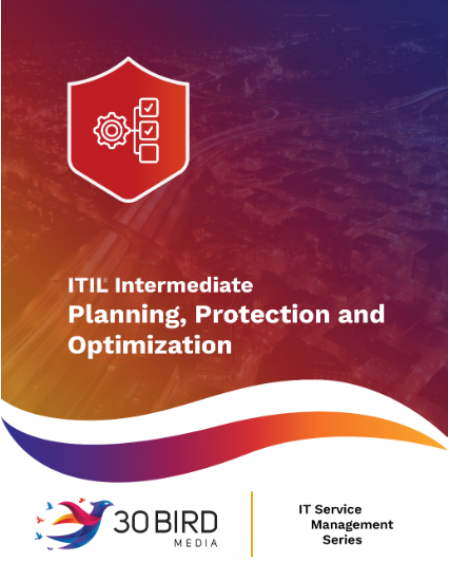Chapter 1: Introduction to Planning, Protection and Optimization
The purpose, objectives and value of service design
The lifecycle in context
Service design basics
Interfaces of design coordination with other processes
Chapter 2: Capacity Management
The purpose, objectives Capacity Management
The scope of Capacity Management
The importance of Capacity Management
Capacity management policies, principles, and basic concepts
Main activities, methods and techniques of Capacity Management
Triggers, inputs, outputs and interfaces of the process
Capacity management information system
Critical success factors (CSFs) and key performance indicators (KPIs)
Challenges and risks of Capacity Management
Chapter 3: Availability Management
Purpose and Objectives of Availability Management
Scope of Availability Management
Importance of Availability Management
Availability Management Policies, Principles & Basic Concepts
Main Activities, Methods and Techniques of Availability Management
Triggers, Inputs, Outputs and Interfaces of Availability Management
Information Management
CSFs and KPIs
Challenges and Risks of Availability Management
Chapter 4: IT Service Continuity Management
Purpose and Objectives of ITSCM
Scope of ITSCM
Importance of ITSCM
ITSCM Policies, Principles & Basic Concepts
Main Activities, Methods and Techniques
Invocation of ITSCM
Triggers, Inputs, Outputs and Interfaces
Information Management
CSFs and KPIs
Challenges and Risks
Chapter 5: Information Security Management
Purpose and Objectives of ISM
Scope of ISM
Importance of ISM
ISM Policies, Principles & Basic Concepts
Main Activities, Methods and Techniques
Invocation of ISM
Triggers, Inputs, Outputs and Interfaces
Information Management
CSFs and KPIs
Challenges and Risks
Chapter 6: Demand Management
The importance of DM to the Service Lifecycle
The purpose and objectives of DM
The scope of DM and value to the business
The policies, principles and basic concepts
DM process activities, methods, and techniques
DM triggers, inputs, outputs and interfaces
Information management
CSFs and KPIs
Challenges and risks
Chapter 7: Planning, Protection and Optimization Roles and Responsibilities
Process Manager Role and Responsibilities
Process Practitioner Role and Responsibilities
Capacity Management Process Manager
Availability Management Process Manager
IT Service Continuity Management Process Manager
Information Security Management Process Manager
Demand Management Roles
Chapter 8: Technology and Implementation Considerations
Generic requirements for technology to assist service design
Evaluation criteria for technology and tooling for process implementation
Good practices for practice and process implementation
CSFs and risks related to implementing practices and processes
How to plan and implement service management technologies
Consideration for implementing technologies in supporting PPO processes
ITIL Planning, Protection and Optimization focuses on the practical application of PPO practices in order enable capacity, availability, IT service continuity, information security and demand management. PPO provides guidance on developing organizations’ and individuals’ understanding of the ITIL Service Design processes.
To request the PowerPoints for this course, please e-mail sales@30bird.com.

